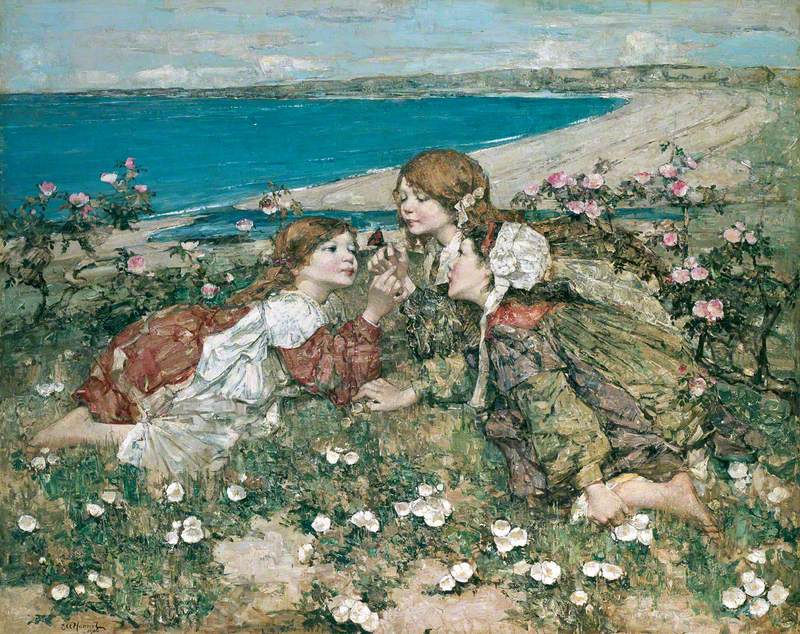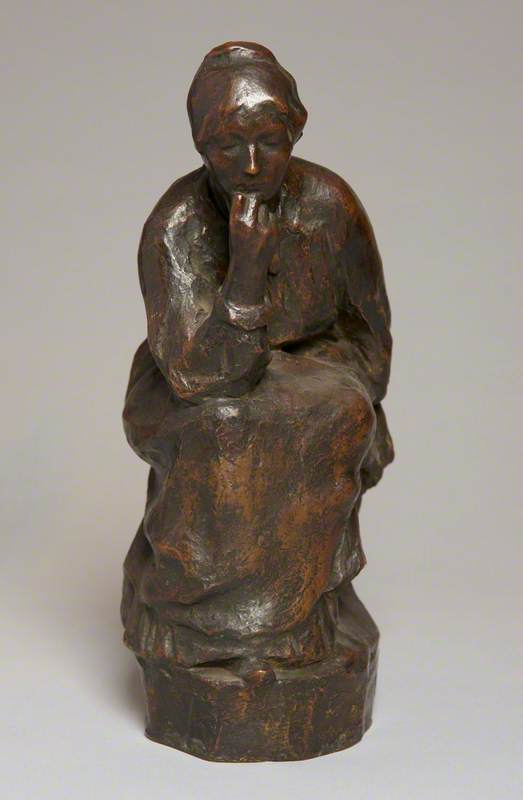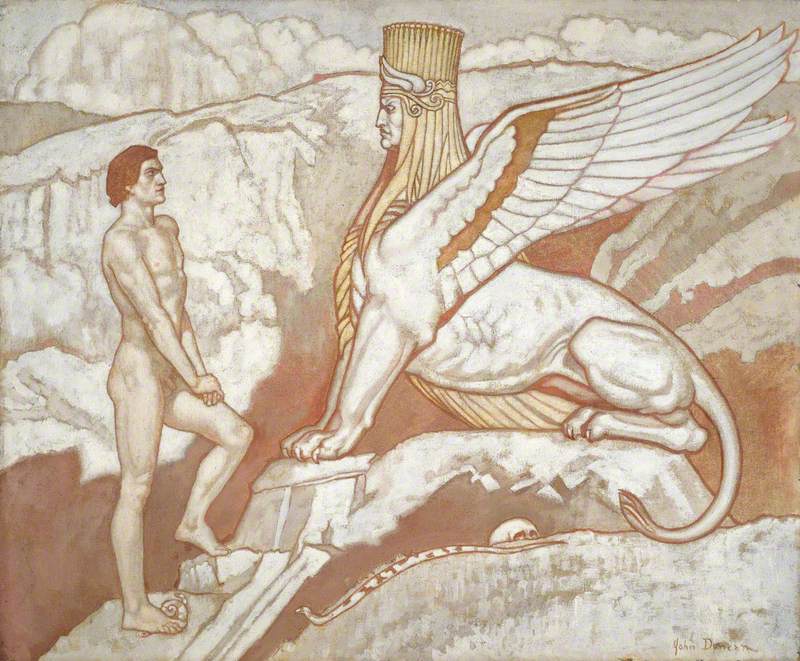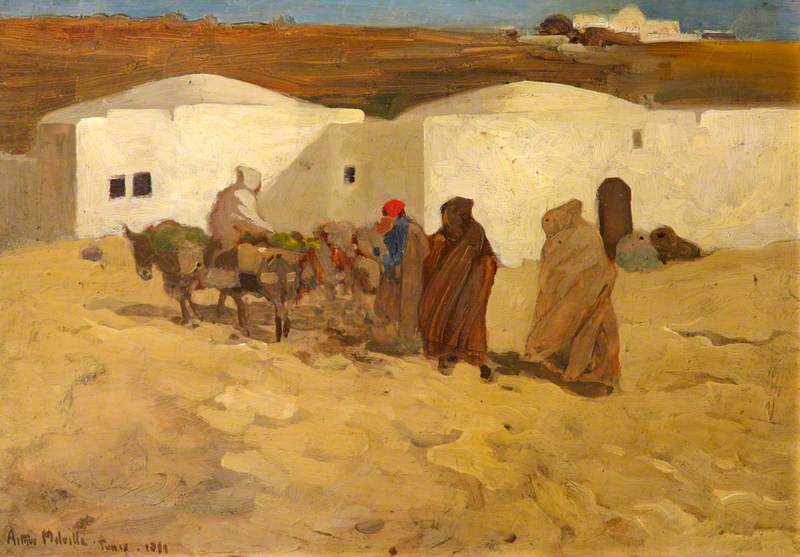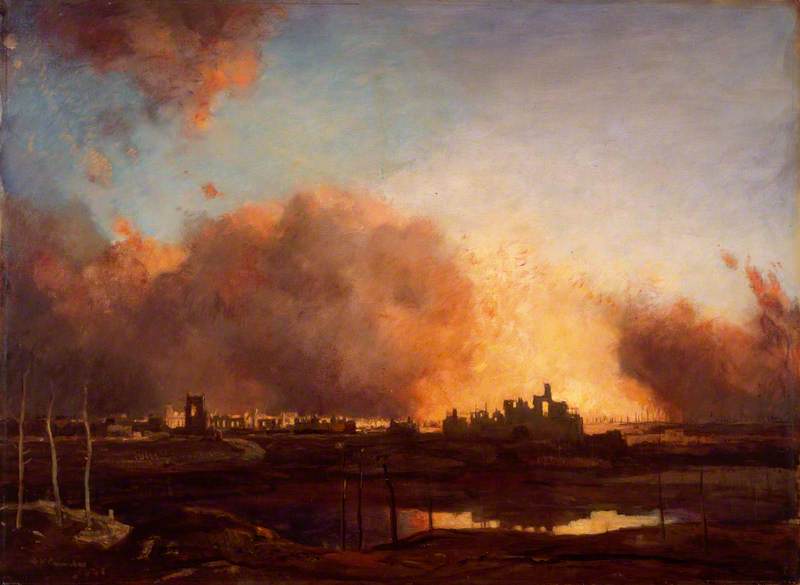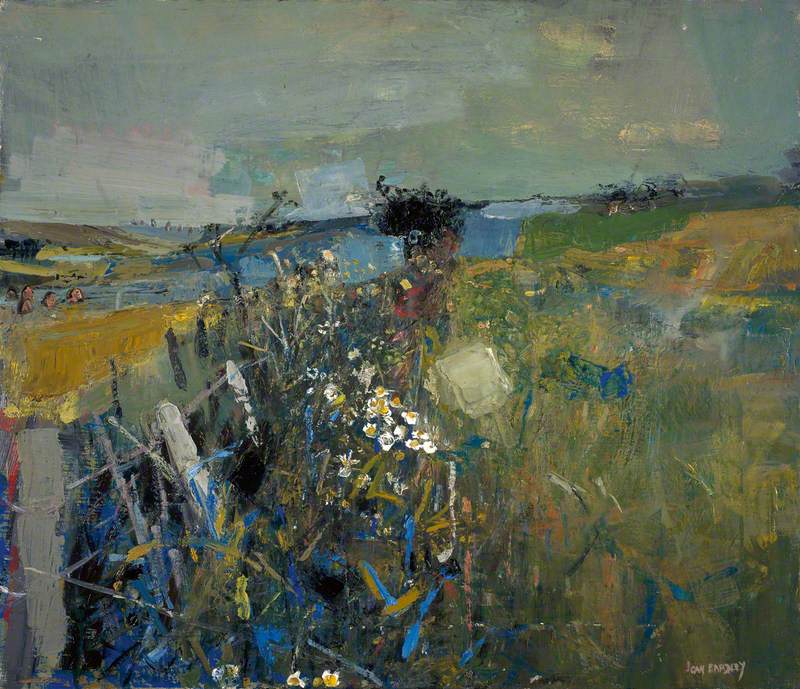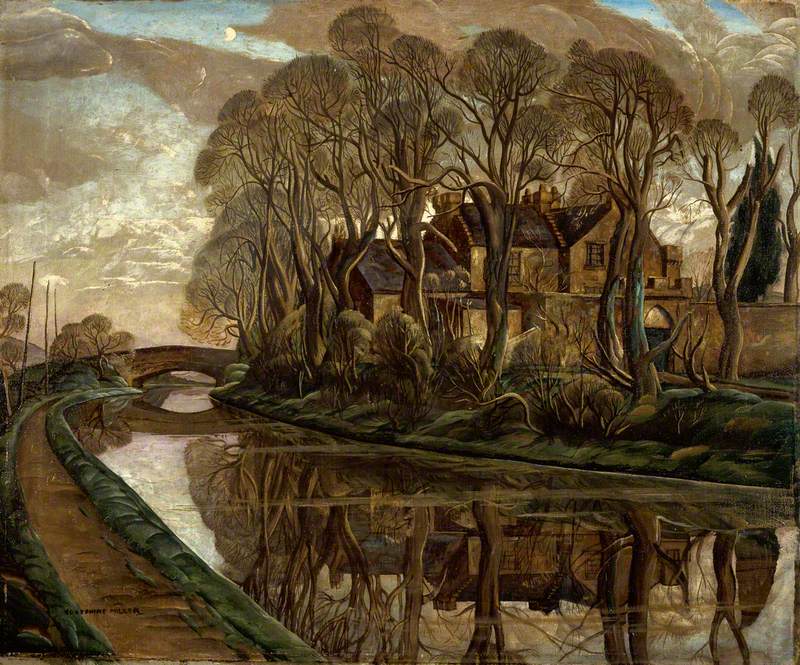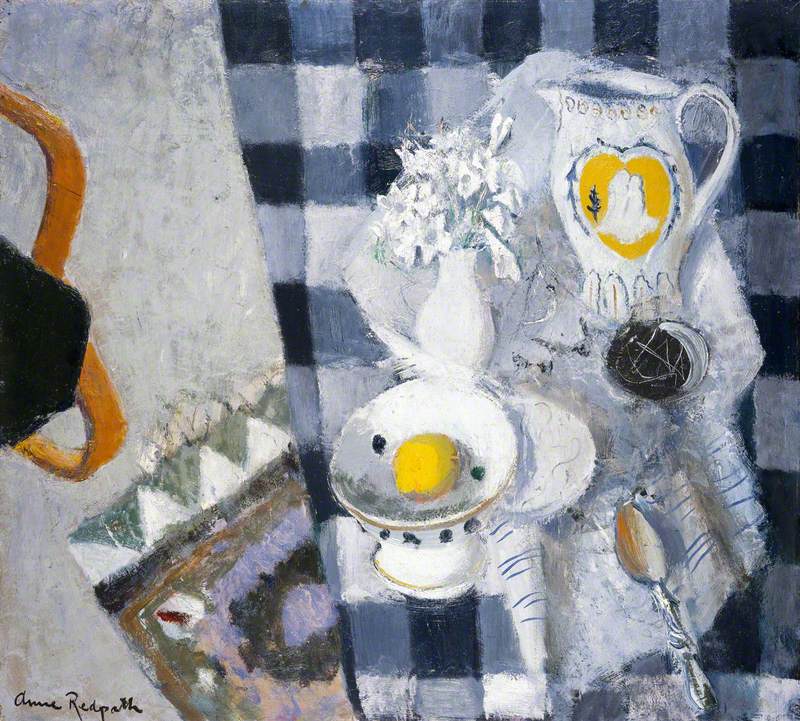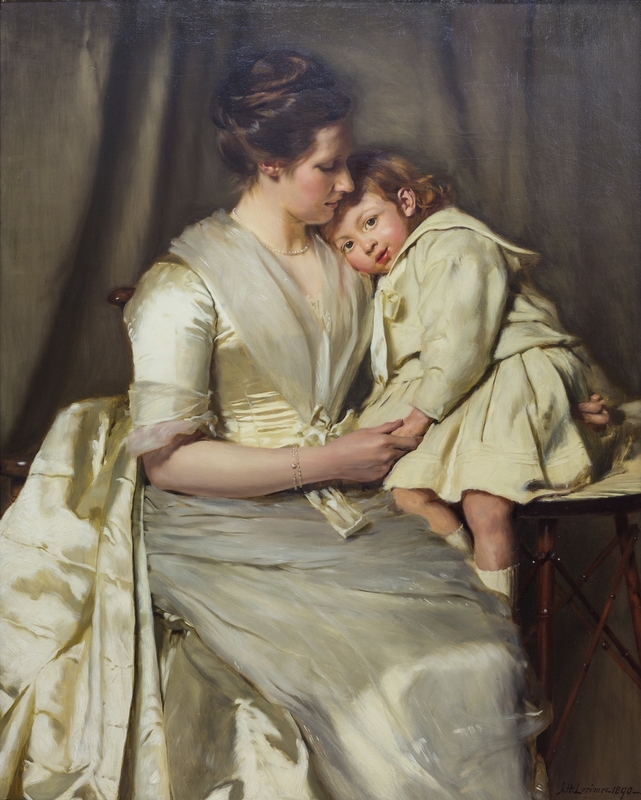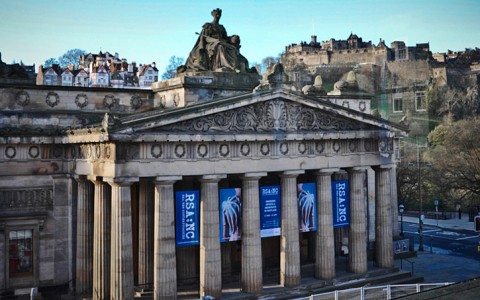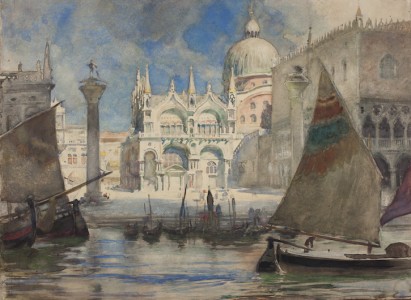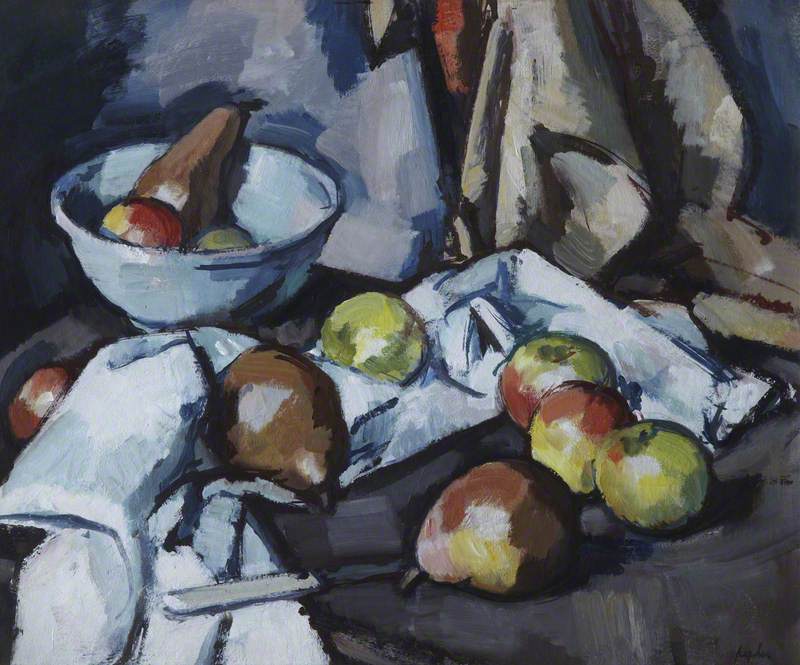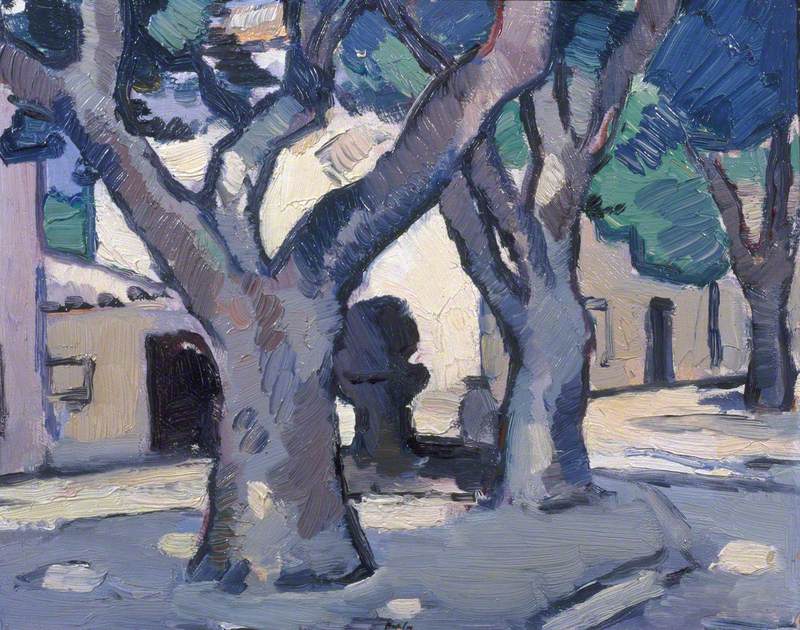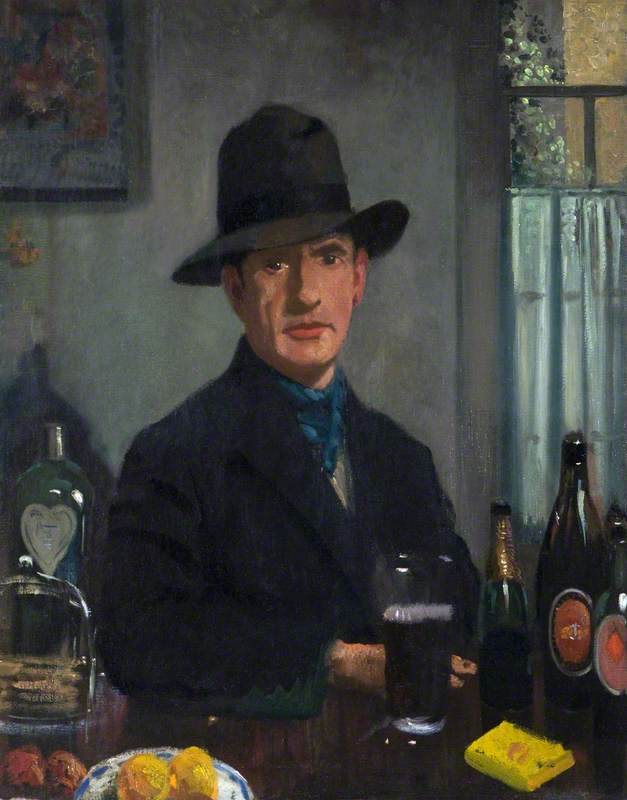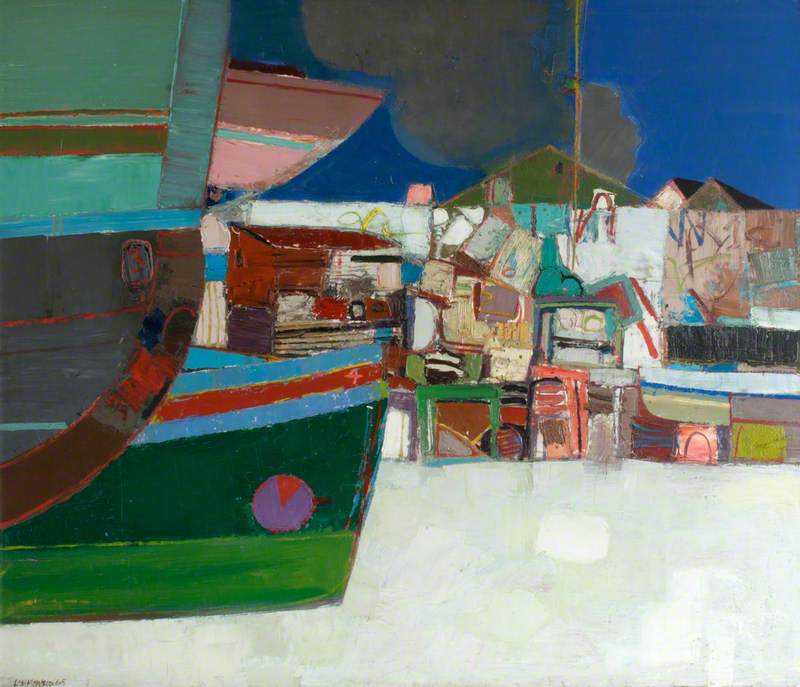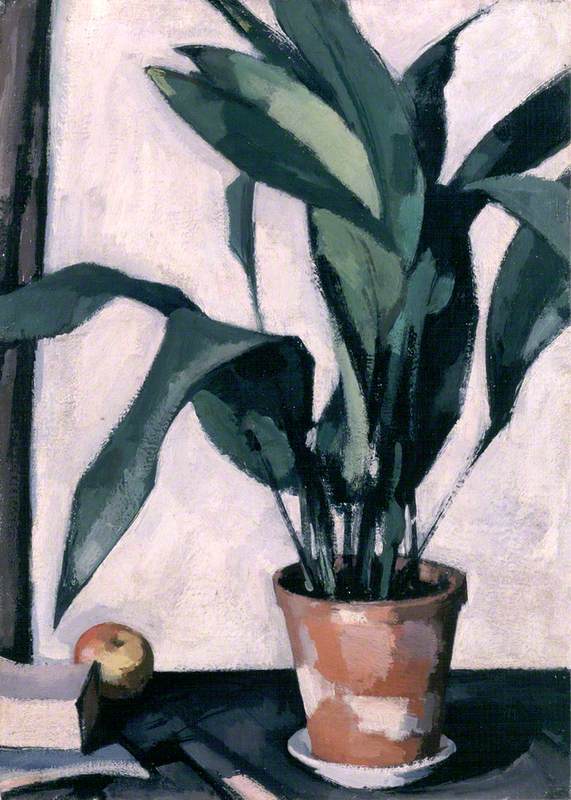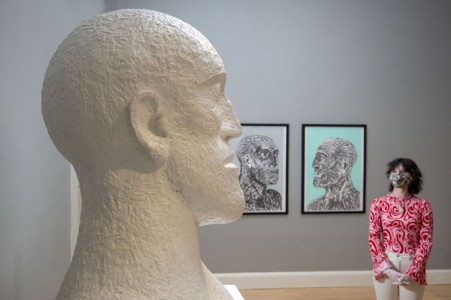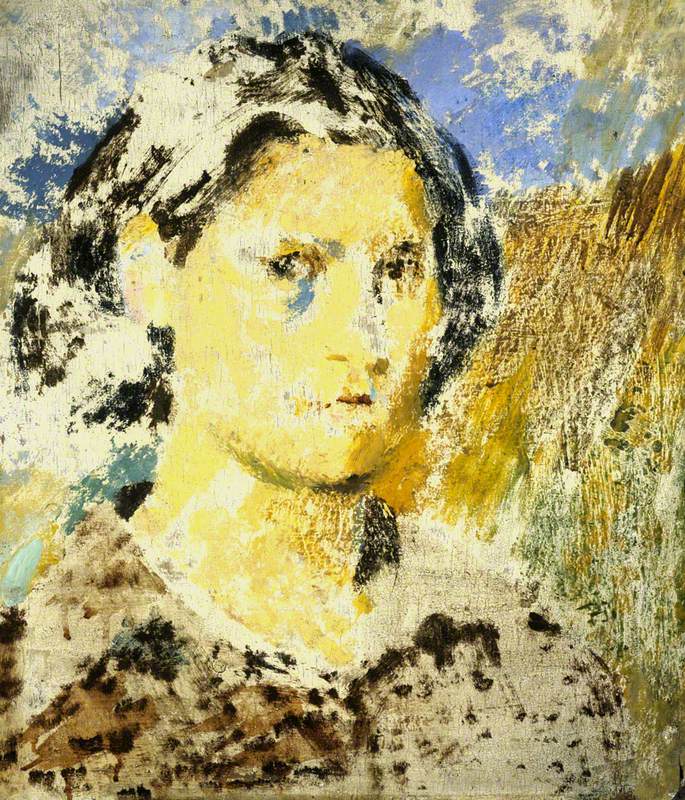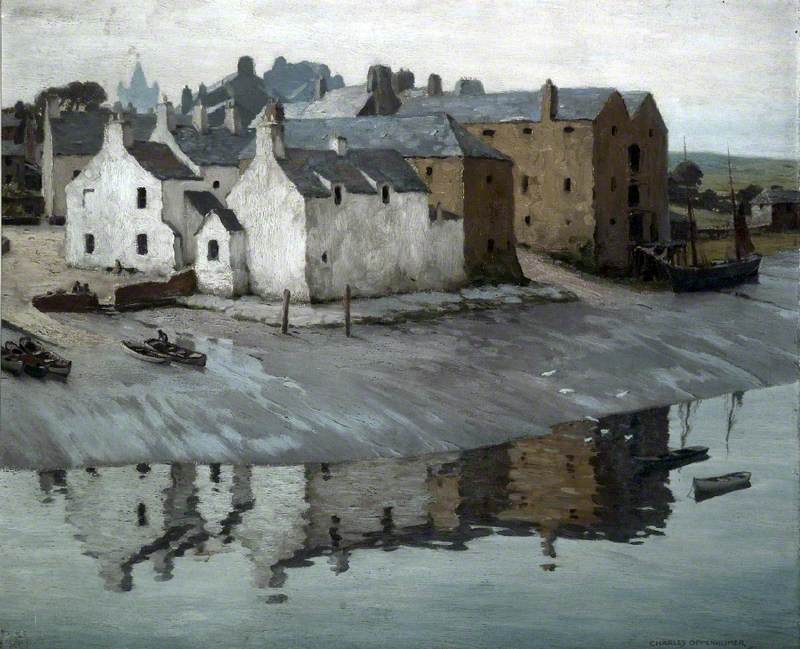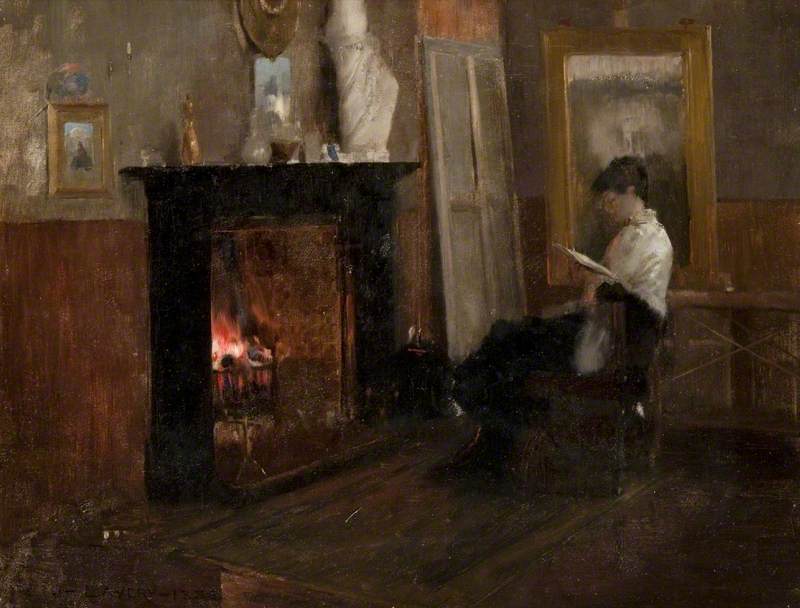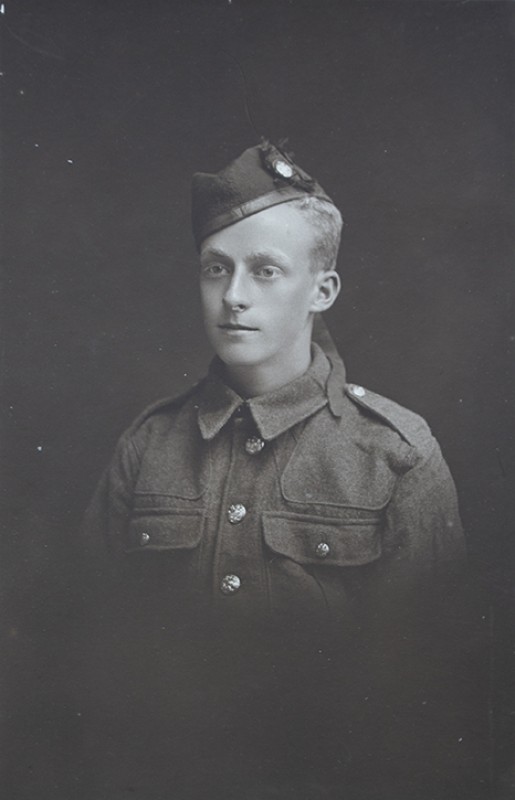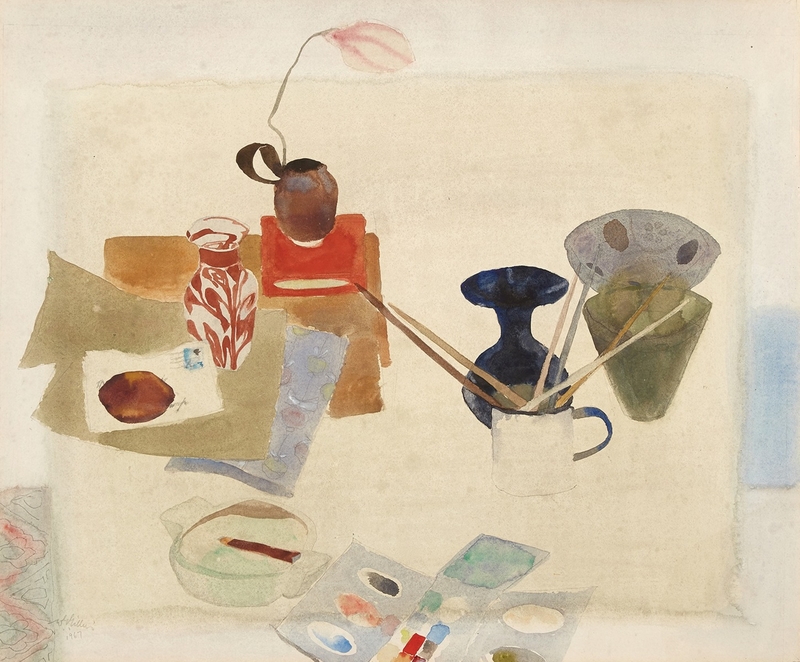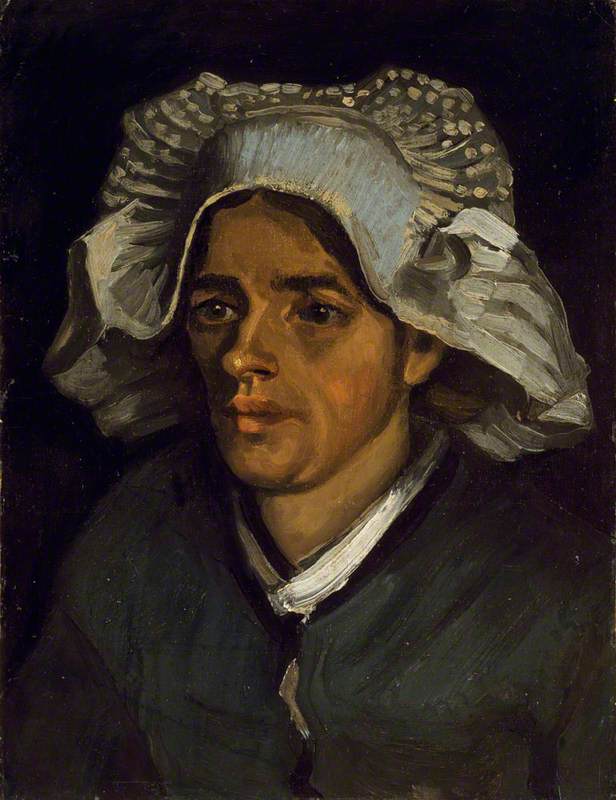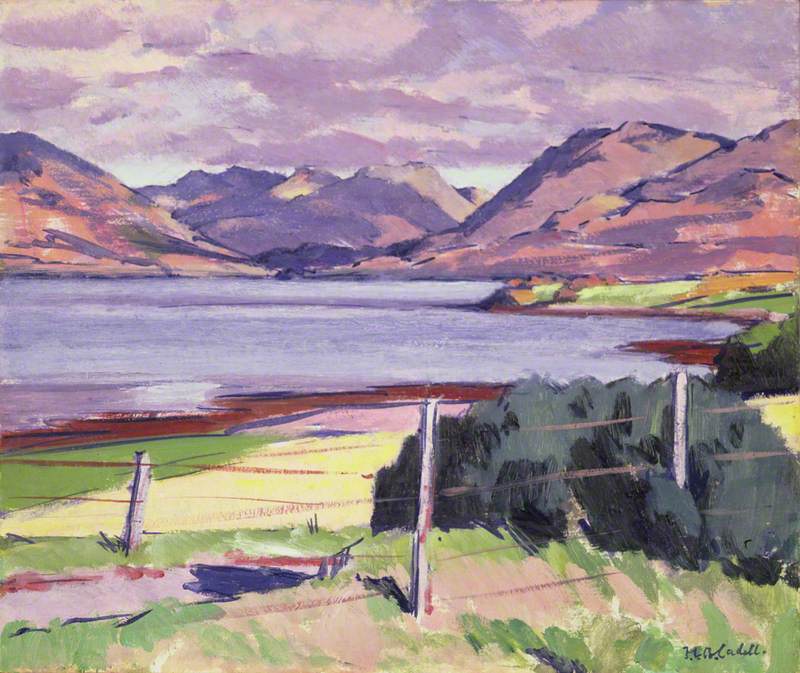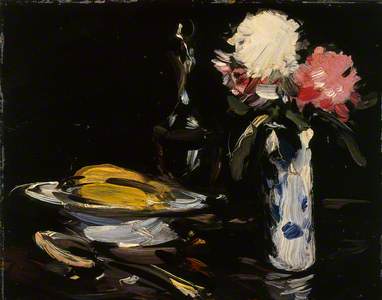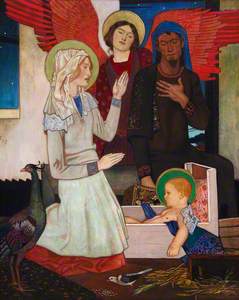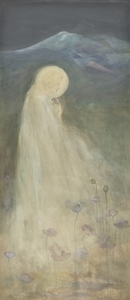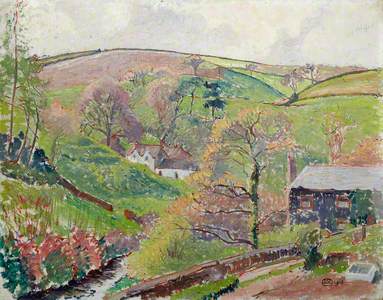On 21st May 1906, the painter and printmaker James Cadenhead welcomed a group of 11 artists and art enthusiasts to his home in Edinburgh. Among the party were Charles Hodge Mackie, John Henry Lorimer and David Young Cameron. The gathering had been assembled to discuss two pressing issues: the inadequate representation of Scottish art in national collections, and the lack of support available to contemporary artists north of the border.
This meeting was no meagre talking shop; the attendees had tangible action in mind. Having agreed on basic principles, they resolved to establish a new, forward-thinking body to address the challenges at hand: the Scottish Modern Arts Association.
Installation view of 'National Treasure: The Scottish Modern Arts Association'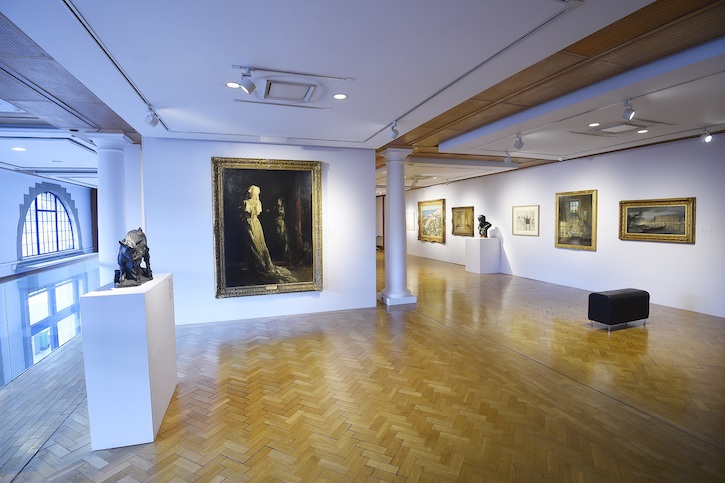
Now a major exhibition at the City Art Centre in Edinburgh is telling the story of this pioneering organisation and exploring its multi-layered legacy. 'National Treasure: The Scottish Modern Arts Association' showcases the highlights of the Association's art collection, which was amassed between 1907 and the early 1960s.
Featuring work by leading Scottish artists of the day, the collection was developed as the proposed nucleus of a national collection – preceding the creation of the Scottish National Gallery of Modern Art by more than half a century.
Archibald Stodart Walker (1870–1934), MA, MB, MBE
c.1912
James Guthrie (1859–1930) 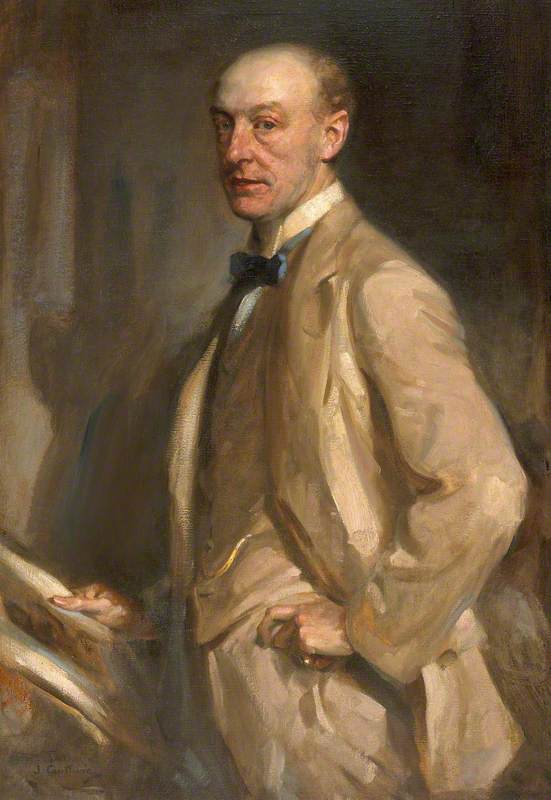
The Scottish Modern Arts Association was formally constituted in March 1907. Its first chairman was Archibald Stodart Walker, an erstwhile doctor turned writer and art critic with a passion for contemporary art. The Association's principal aim was to acquire representative specimens of modern Scottish art for a future national collection. Purchases would be funded by membership subscriptions and one-off donations from patrons. Gifts of suitable artworks were also encouraged. By 1908, when the Association published its first annual report, it had already recruited 260 members, each paying fees of at least one guinea per year.
These funds were soon put to good use. Within a few months the Association had bought four initial paintings, including recent works by Samuel Peploe and Edward Atkinson Hornel. Aspirations for the future were high. As Stodart Walker wrote in May 1907: 'Given sufficient encouragement, there is no reason why we should not eventually possess one of the most characteristic and notable collections of modern art in Europe'.
The Association placed great emphasis on making its collection accessible to the public. Recognising that a permanent gallery would be a long-term goal, it mounted temporary touring exhibitions and arranged numerous loans to regional museums and galleries. Artworks were sometimes even lent abroad.
Over the years the Scottish Modern Arts Association accumulated over 300 artworks, spanning the disciplines of painting, drawing, printmaking and sculpture. Many of these works were purchased at the annual exhibitions of the Royal Scottish Academy and the Royal Glasgow Institute of the Fine Arts. Others were bought directly from artists. The Selection Committee aspired towards a collection reflecting the best contemporary art in Scotland, irrespective of school, style or subject matter.
Artists did not need to be famous to have their work included in the collection. Indeed, some of the most intriguing pieces are by lesser-known figures, such as Ancell Stronach and Robert Traill Rose.
The White Peace (The Garden of Memory)
Robert Traill Rose (1863–1942) 
Women artists were also remarkably well represented, given the widespread professional discrimination they faced at the time. From the outset, the Association recognised their contribution, acquiring works by trailblazing individuals such as Bessie MacNicol, Katharine Cameron and Christina Paterson Ross.
Portrait of a Lady (The Green Hat)
c.1896
Bessie MacNicol (1869–1904) 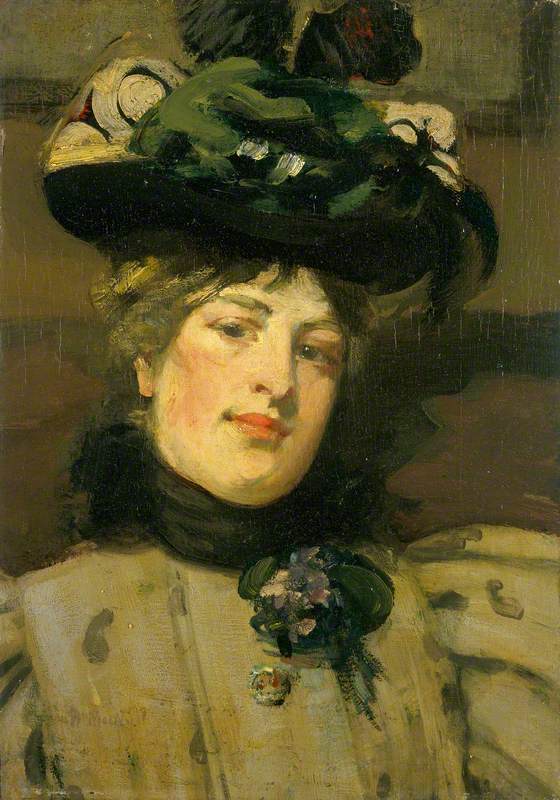
Some members purchased artworks themselves with the intention of presenting them to the Association. Sir John Stirling Maxwell, the organisation's first President, gifted five oil paintings between 1910 and 1950, including The Challenge by John Duncan. Bequests were another regular occurrence. When Archibald Stodart Walker died in 1934, at least 30 of his pictures joined the collection.
The main focus was on acquiring work by Scottish artists, who were either living or recently deceased. However, the Association also sought modern art from other countries, with works by William Orpen, Jacobus Cossaar and Lucien Pissarro, among others, being added in the first few decades.
The decision to broaden the collection in this way stemmed from a desire to present Scottish art within an international context. The Association always maintained a global outlook, and wanted the nation's artistic achievements to be seen as part of the wider canon of modern art. A more diverse collection equally provided a richer viewing experience for Scottish audiences.
The question of housing this growing collection was an issue from the start. The Association needed space to display its artworks to the public, but it also faced the practical problem of storage.
In 1910 it received permission to exhibit the collection annually at the Royal Scottish Academy. Displays could remain in place for up to eight months, with artworks travelling the country during the rest of the year. By the 1940s, Kirkcaldy Art Gallery in Fife had become the main repository for storing and exhibiting the collection. Inevitably, though, as acquisitions multiplied, such arrangements became increasingly untenable.
Lady with a Japanese Screen and Goldfish (The Artist's Mother)
1886
James Cadenhead (1858–1927) 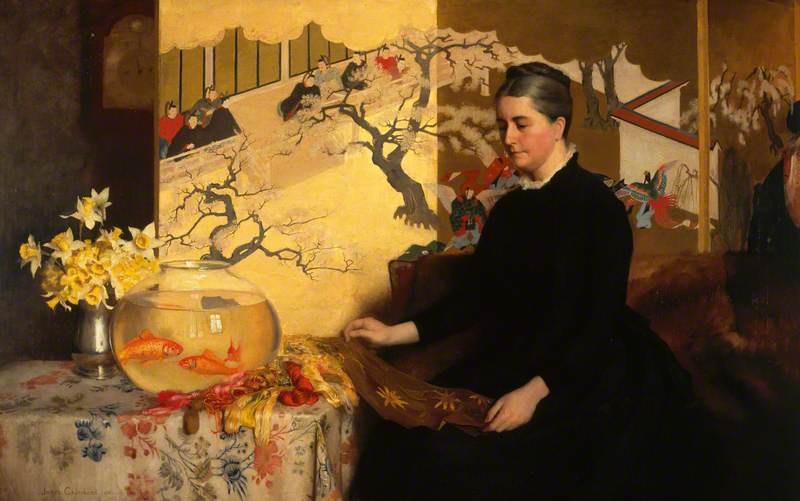
The Association's ultimate goal was the establishment of a dedicated national gallery of modern art – an institution that would demonstrate Scotland's ongoing contribution to visual culture. Members initially hoped to secure the necessary funding from private patronage. When this idea fell flat, they lobbied the government for support instead. The campaign continued for over 50 years, slowly building momentum.
Throughout this period various options were proposed for a gallery site in Edinburgh. Ideas ranged from a striking new modernist building on Queen Street to the redevelopment of the Royal High School on Calton Hill. However, against a backdrop of war, economic uncertainty and government bureaucracy, consensus could not be reached.
Deadlines expired and plans stalled repeatedly. It was not until the late 1950s that a resolution was found. Having secured the venue of Inverleith House in Edinburgh's Royal Botanic Garden, the National Galleries of Scotland opened the Scottish National Gallery of Modern Art in August 1960.
Although the Association had initiated the campaign for such a gallery, it was effectively side-lined from the latter stages of the project. By the early 1960s, the organisation had entered a terminal decline. It struggled to engage with cutting-edge artistic developments and was increasingly seen as old-fashioned and irrelevant. Membership numbers fell, and finances deteriorated to the point that it was forced to disband.
At this stage, the Association offered its artworks as a gift to the Scottish National Gallery of Modern Art. The proposal seemed logical but prompted yet more disappointment. While the National Galleries of Scotland recognised the generosity of the gesture, it felt it could not accept it. To receive such a large group of Scottish artworks would be to overwhelm the new gallery, and skew its balance too heavily in favour of Scottish art when its remit was supposed to be international.
Seeking an alternative home for the collection, the Association subsequently began discussions with the City of Edinburgh, which had recently started developing its own collection of Scottish art. This time negotiations proved fruitful, with the President of the Royal Scottish Academy, William MacTaggart, playing a pivotal role in convincing the City to take the artworks. The majority of the collection was transferred in 1964.
Prayer to Aphrodite
before 1947
Josefina de Vasconcellos (1904–2005) 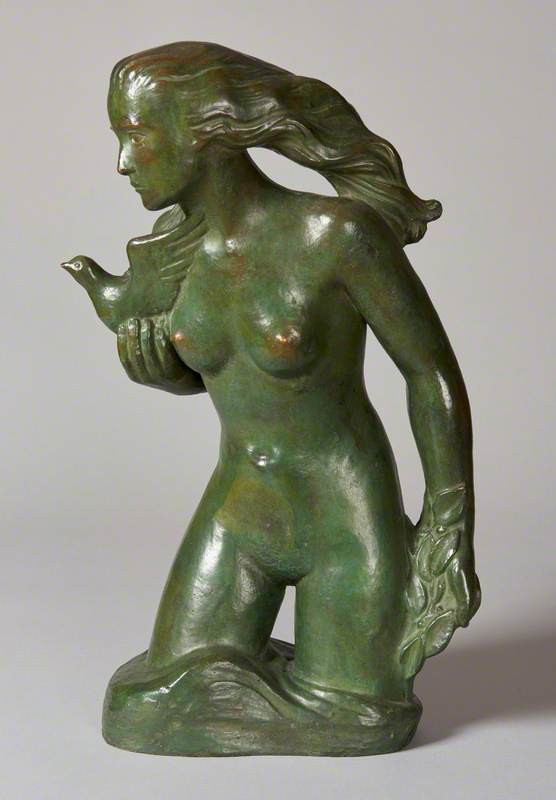
The Scottish Modern Arts Association never quite lived up to its original ambitions, but its legacy is nonetheless significant. Its long-term advocacy for living artists supported the careers of many during a period of considerable economic instability.
Its persistent calls for a modern art gallery kept this aspiration on the agenda for more than fifty years, paving the way for the eventual creation of the Scottish National Gallery of Modern Art. Crucially, it oversaw the creation of a truly unique art collection, preserving for posterity some of the finest artworks of the era.
Helen Scott, Curator of Fine Art, City Art Centre
See 'National Treasure: The Scottish Modern Arts Association' at City Art Centre, Edinburgh until 16th October 2022
Further reading
A. Eddington, The Scottish Modern Arts Association, The Studio, Volume 45, November 1908, pp. 114–119
Anne Galastro, An Institutional History of the Scottish National Gallery of Modern Art: Tensions, Paradoxes and Compromises, University of Edinburgh, 2011
Aileen Smith 'The Scottish Modern Arts Association', The Construction of Cultural Identity in the Visual Arts in Scotland 1918–1945, University of Aberdeen, 1998, pp. 12–81
Archibald Stodart Walker, The Scottish Modern Arts Association, The Studio, Volume 40, May 1907, pp. 309–311

